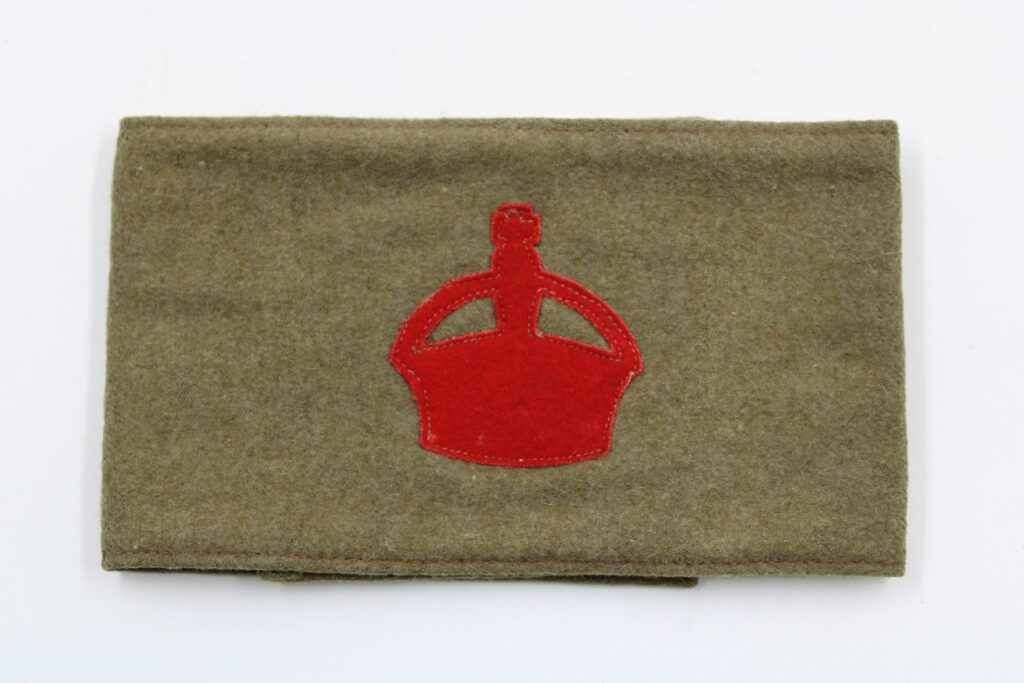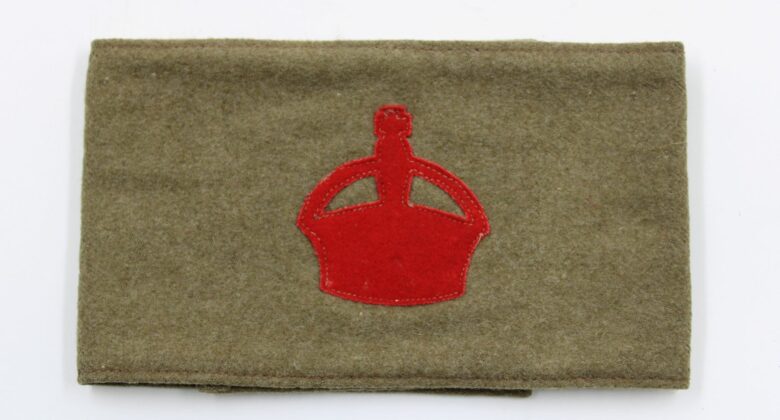‘Derby Scheme’ Armband 1915
The ‘Derby Scheme’ was introduced during the First World War, as the war was lasting longer than had been anticipated and the British Military needed more recruits. Named after Herbert kichener’s new Director General of Recruiting – Edward Stanley, 17th Earl of Derby, the scheme involved canvassers visiting eligible men in their homes to persuade them to ‘attest’ for war service, which was an ‘official promise’ obligating the man to fight when he was required to.
Derby’s scheme was to get a public declaration from every man aged 18-41 who was not in an essential occupation to make a public declaration. In some cases just hearing of the scheme prompted men to go to the recruiting office rather than wait for the inevitable visit from the canvassers who were made up of ‘tactful, persuasive and influential ‘ men, such as politicians, discharged veterans, and fathers of serving soldiers.
Each visit involved the giving of a letter from the Earl of Derby, to which the recipient had to then say whether or not he would attest to join the army. They would then give a promise to present themselves at a recruiting office within 48 hours, some were even accompanied there immediately after the attestation. Then, after they had passed a medical each new recruit was sworn in and paid a ‘signing bonus’ and given a khaki armband with the royal crown stitched onto it. They were then assigned a married or unmarried group and awaited to be called for active service.

The armband was worn with civilian clothes by men who had formally signed up (attested) for army service. It was introduced in October 1915 as part of a scheme devised by Lord Derby, Director General of recruiting to try and avoid forcing conscription on all men of serving age.
Men aged between 18 and 41 were asked to sign up, on the understanding that all single men would be called up before the youngest married volunteers. Any men who swiftly got married after the day the scheme began were still classified as single. They were assigned a unit and given a military record, but they would not officially serve until their whole unit was called up to do so.
When the scheme closed in December 1915, more than a million single men had still failed to enlist, and even more married men resisted the pressure to enlist by the scheme, so the British Government passed the Military Service Act of Compulsory Conscription into the war on 27th January 1916. The British needed a strong supply of replacement troops to counteract the grim toll of mounting casualties overseas, this meant if you were eligible and medically fit, going to war was unavoidable.

